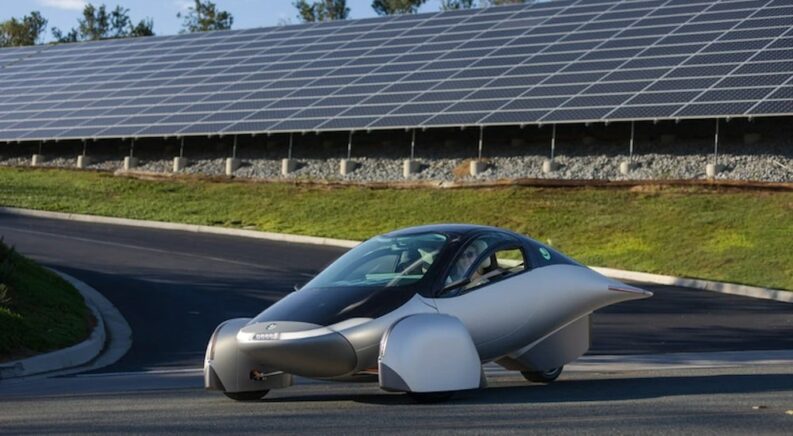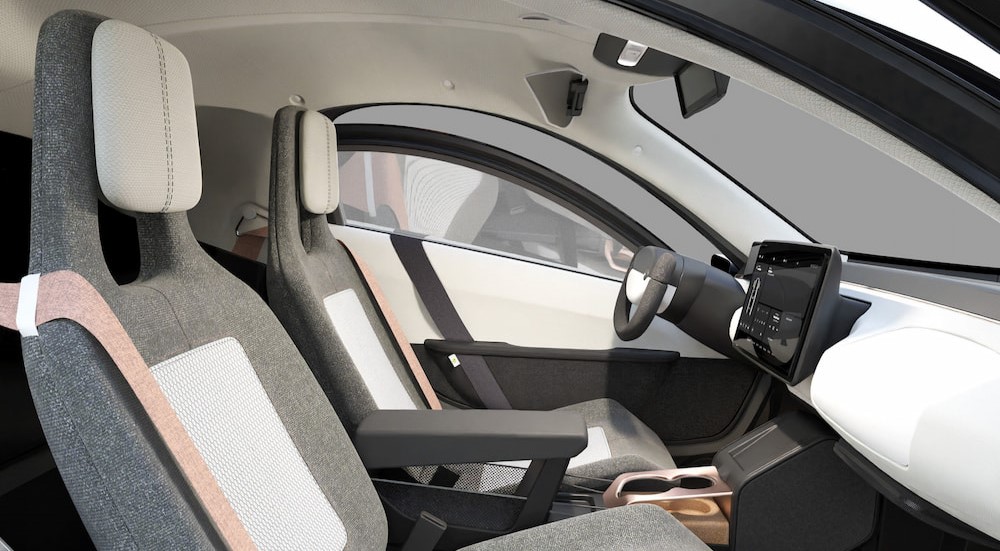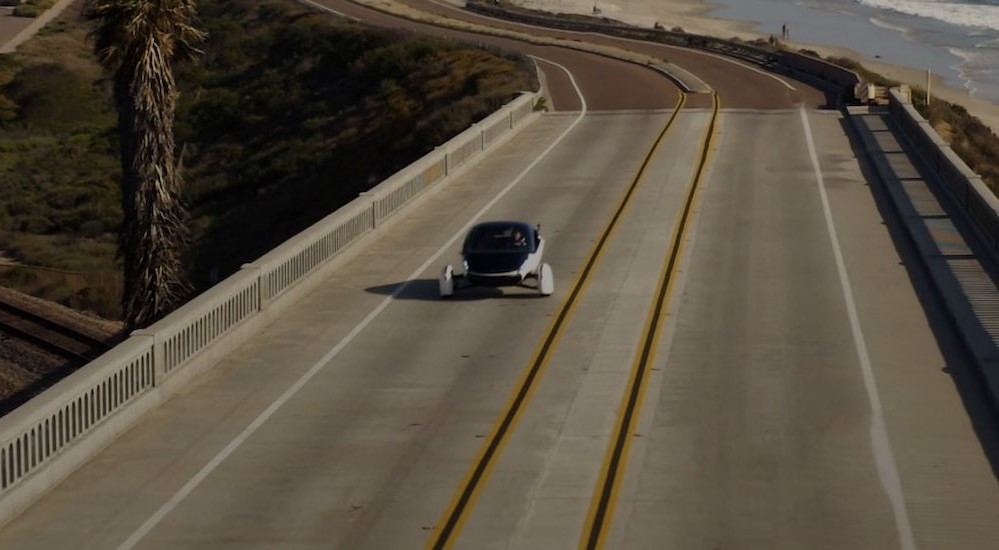For those looking to turn their dreams into a reality, crowdfunding can be a priceless source of much-needed capital. From gaming systems, gadget-laden coolers, and fidget toys to an inflatable sculpture of Lionel Richie’s head and a batch of potato salad that eclipsed its $10 goal by some $55,480, this unique fundraising method has brought all sorts of odd-ball creations to the market over the last decade. Now California-based Aptera Motors is trying to add solar-powered electric cars to the long list of crowdsourced success stories with its debut model, the Aptera Launch Edition.
With speeds that rival some sports cars and a potential all-electric range of 1,000 miles, the Aptera Launch Edition could either change the face of the segment or end up as another footnote in the history of alternative fuel vehicles. The automaker has raised over $100 million from more than 17,000 individual investors as part of its Accelerator crowdfunding program but has been hampered by delay and growing pains, and it attempts to scale up production and work out some of the kinks. So what should drivers know about this intriguing new model, what is Aptera’s success record when it comes to EV production and what sort of hurdles stand between the Aptera Launch Edition and full-scale production? Read on as we explore the Aptera story and see if its new solar-powered vehicle will ever get its moment in the sun.
A Bright Start
The Aptera Launch Edition isn’t the company’s first attempt to bring an alternative fuel vehicle to market. Aptera, which was originally founded in 2006 as Accelerated Composites, first experimented with a plug-in hybrid model dubbed the typ-1. Later rechristened the 2e, the early effort was thought to be the first EV with the potential to break the all-important 300 MPG mark. Aptera landed $24 million in funding from Google and Idealab and announced a production timeline that would see the EV/hybrid hit the streets by late 2008.
The 2e generated plenty of hype as the potential alternative fuel vehicle of the future, appearing on countless magazine covers and even earning a cameo in the 2009 Star Trek movie. Orders soon came rolling in, and Aptera received $500 deposits from around 2,000 interested customers, but that’s where the road started to get a little rocky. Aptera delayed the 2e until 2009 as it scrambled to secure additional funding, and the issue was only exacerbated as the year went on. The fledgling automaker had been banking on a loan from the US government’s Advanced Technology Vehicles Manufacturing Loan Program to help get the 2e into production, but there was just one problem: the 2e was missing a wheel. The ATVMLP was focused on the development of four-wheel alternative fuel vehicles, meaning the three-wheeled 2e, which was technically classified as a motorcycle, was out of luck.
Aptera successfully lobbied the government to broaden the program to include three-wheeled vehicles and applied for $184 million funding as part of the ATVMLP in late 2009, but that money would never actually come through. The US Department of Energy was willing to offer a $150 million low-interest loan if Aptera could secure matching funds from private investors, but that proved to be a little too difficult for the automotive newcomer. Development of the 2e was hampered by a lack of funds, the decision to shift to a four-wheel, sedan-based model, and a poor showing at the 2011 automotive X-Prize competition where the EV/hybrid overheated 30 laps into the 50-lap race, and Aptera soon decided to pull the plug. The company refunded customer deposits in the mid-2011 and was liquidated soon after.
A New Dawn
Aptera relaunched in 2019 with original founder Chris Anthony and Steve Fambro at the helm. The team, which had seemingly learned its lesson from the failures of Aptera 1.0, embraced both new alternative fuel technology and an entirely new funding method in a renewed attempt to bring the new Aptera Launch Edition vehicle to the market. The addition of solar panels—as well as the use of modern materials and components like lightweight carbon fiber and fiberglass composites and wheel hub motors—should allow the new battery-powered electric vehicle (BEV) Aptera model to achieve an initial range of 400 miles per charge with the solar panels adding around 40 miles of range per day. Aptera has even suggested that the range could be extended up to 1,000 miles as the technology matured, which would easily make the Aptera Launch Edition the longest-range vehicle on the market.
First unveiled in early 2023, the Aptera Launch Edition employs around 700 watts worth of solar cells to give the EV a marked advantage over many of its competitors. While one might expect a trade-off between performance and efficiency, the brand says the Aptera Launch Edition will be able to speed from zero to 60 mph in just four seconds. The EV will be charged via the Tesla NACS port, driven by an in-wheel motor, and will use comma.ai’s Openpilot driver assistance system. The Aptera Launch Edition is also designed with an extremely aerodynamic body and is said to weigh around 1,800 lbs less than the average EV.
While the Aptera Launch Edition would certainly be a game-changing addition to the segment, it’s Aptera’s crowdfunding approach that’s really turning some heads. The automaker initially went the private investment route, leveraging three new prototypes to secure $39 million in funding by the end of 2021 and while that cash allowed Aptera to acquire three buildings in Carlsbad, California and hire around 60 workers, the EV company soon turned to smaller investors to make their solar-powered dreams come true.
Aptera’s Accelerator Program crowdfunding launched in early 2023 and, over the course of the last year, raised more than $33 million from 2,000 early investors who ponied up at least $2,000 to reserve their own Aptera Launch Edition EV. An additional $21 million investment from the California Energy Commission and a $3.3-million pre-order from SustainabilitySooner have also buoyed the company’s offers, but that doesn’t necessarily mean it’ll be smooth sailing from here on out.
Cloudy Conditions
Scaling up is hard to do. Catching the public’s attention with an innovative start-up idea isn’t that tricky, but bringing that dream to fruition is another matter entirely. While the 2,000 investors and 40,000-plus pre-orders clearly mean there’s plenty of enthusiasm around Aptera’s solar-powered EV concept, the cost of full-scale production can’t be ignored. Aptera has indicated that it is currently seeking around $50 million in additional investments to build out its arsenal of tooling and equipment.
The automaker reports that it has now raised over $100 million from its crowdfunding campaign and is still drumming up private investment from firms like US Capital, but that doesn’t seem to be enough to get the Aptera Launch Edition off the ground. While Aptera initially indicated that the initial 2,000 pre-orders would provide enough cash to fund the initial phase of production, the company has since backtracked. “The start of production for Launch Edition vehicles requires additional capital, and we plan to share delivery timeline details as soon as we can,” said Fambro in early 2024.
The first Aptera Launch Edition models were supposed to make their way to investors by 2024, but it now looks like production won’t begin until 2025. The auto brand is still bullish on its prospects with an announced annual output of 20,000 units by 2026, but their SEC filings don’t paint quite as rosy of a picture. In one recent document, Aptera indicated that they’re facing “significant technological and legal barriers to entry,” which could delay production even further.
That’s not to say the company isn’t making progress. Aptera has contracted with Italy’s CPC Group to assemble the Aptera Launch Edition’s chassis and suspension components and has developed a line of sample battery modules with Korea’s CTNS. The company also recently unveiled an early look at its owner app, which will allow drivers to monitor the EV’s solar stats and precondition the cabin right from their phone.
What’s on the Horizon for Aptera?
Only time will tell what the future holds for Aptera. Will the nascent automaker be the Tesla of the solar-powered EV market or will history repeat itself and see the company fold before its vehicles enter widespread production? Solar power certainly holds a lot of promise in an industry where driving range-related anxiety is still cited as one of the major barriers to widespread EV adoption, but it’s hard to tell if Aptera will be the company to finally crack the code.
Aptera certainly looks to have learned from its past mistake, embracing a crowdfunding model that serves as both a marketing tool and a source of capital, though it sure wouldn’t be the first such project to kick the bucket before kickstarting a new product into existence. Regardless of the outcome, it’s still an exciting time in the world of alternative fuel vehicles as hybrid, all-electric, solar, and hydrogen-powered vehicles continue to replace the gas-powered models of old.






